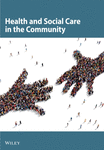Health visitor understanding and rating of 28 health and social factors used as part of a health visitor caseload weighting system
Abstract
This paper reports the results of the first stage of an evaluation study of a health visitor caseload weighting system. In Bristol, health visitor caseloads are compiled annually to complete caseload weighting summaries based on 28 health and social factors known to reflect long-term health outcome. The main study aims to determine the validity and reliability of the caseload weighting system by assessing health visitor variation in interpretation of the health and social factors, the accuracy of caseload factor recording and methods of analysis used in interpreting their significance. This paper describes the exploratory phase of the study involving the distribution of a questionnaire to 252 health visitors in five Trust areas where no caseload weighting system operates. The purpose of the questionnaire and follow-up interviews with 28 health visitors was to develop a multiple-choice questionnaire to assess how health and social factors were being interpreted by health visitors using them in their everyday work. The study indicated that the 28 health and social factors were perceived to significantly influence the need for health visiting services. Some differences in perception of a small number of factors were identified according to the level of deprivation on the caseload. Health visitors' prioritization of child protection, and child protection related health and social factors, raised the possibility that caseload weighting might be used as a ‘child protection check list’ rather than as an overall measure of health visitor need. Interviews showed that a range of thresholds governs the health visitors' application of a particular factor to a family. Health visitor workload is also affected by other factors relating to practice location, which would need to be taken into account if these health and social factors were to be used for estimating workload. Health visitors not currently using the factors view them positively for the assessment of health needs in an area, and for planning work on an individual or management level, but the interviews identified a need for training in their use and suggested more work is needed to tighten and standardize definitions for use in the field.




